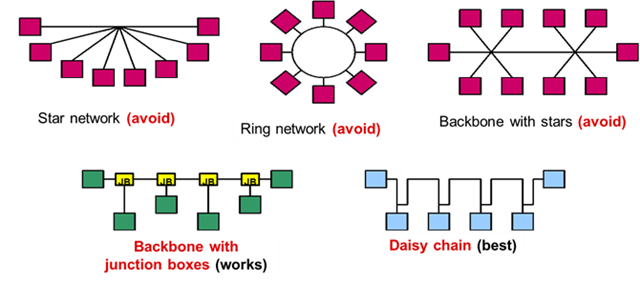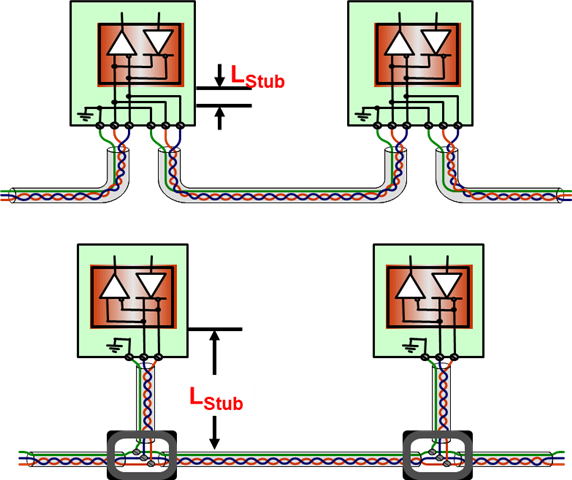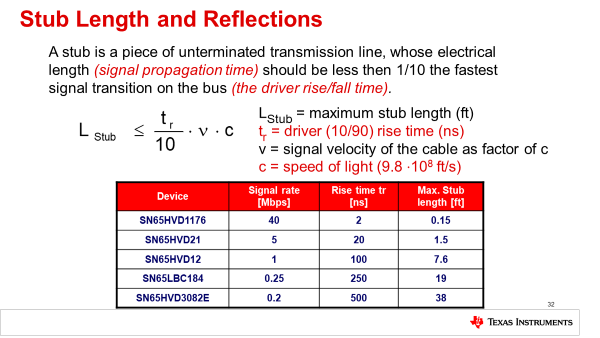Other Parts Discussed in Thread: THVD1454, THVD1424, TVS1401
Hi
We've got an upcoming RS485 Design. Our requirements for this interface are:
- 500Kbps RS485
- Half Duplex
- IEC61000-4-5 Level 2 (8/20us test: 1KV / 42 ohms)
- Selectable 120 ohm termination
- Not isolated
We are considering using THVD1449V for this, but I have some questions:
- I am concerned that this is a 12Mbps transceiver, and we want to use it on a 500Kbps bus. I worry about sharp edges, reflections, and radiated EMI. Others have suggested adding some series resistors to limit this, but I think this is not a great solution, as we don't know what other devices will be on the bus and I worry about what will happen as the bus capacitance loading gets high. Am I right to be worried about the fast slew rate, or is it pretty common to see 12Mbps transceivers on 500Kbps busses?
- I plan to add an opto relay to control the selectable termination. Similar to what's suggested for CAN in TIDA-01238. However, I really do not like this solution for a number of reasons. Lifetime of the TLP175A opto is a concern, max 50 ohm RDSon. Etc. I think I can find a better opto for it, but is there a better solution that would not have these issues? I'd rather find like an analog switch with huge input voltage range.
- If I do add an external switch, can I rely on the Vclamp chart in the THVD1449V to protect it? I don't see typical TVS ratings listed in that datasheet to know what the max Vclamp is, but I do see some sort of typical chart in figure 8-8. Can I assume that the VClamp for about 25A is around 30V?
The other approach I have considered is to use THVD1454, which has the selectable termination integrated and a slew rate limit. Questions with this approach:
- This part is in preview. When will it be available to order for production?
- I would add separate external surge protection TCLAMP1202P for this via TVS diodes. The VClamp will be about 15-20V. But the absolute max for THVD1454 is -16 to 16V. So it's close, but realistically I think there will be a short period of overvoltage, and I'm not sure if the THVD1454 will tolerate it. Any way to know this?
- This approach would parallel the existing TVS protection on the THVS1454 with the new TVS protection. Should I be concerned about this? How do I ensure that the surge doesn't destroy the THVS1454 internal ESD protection?






